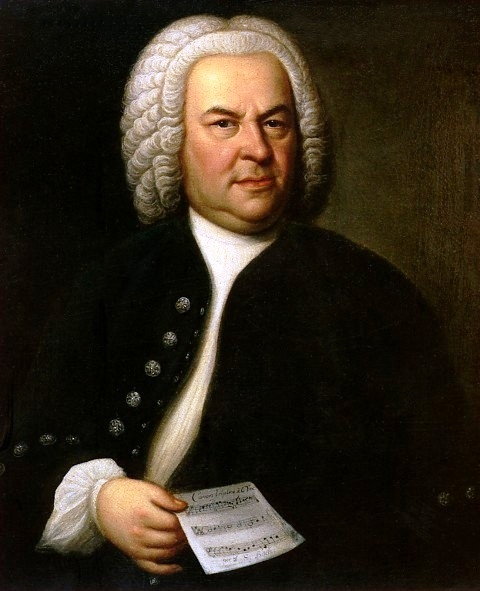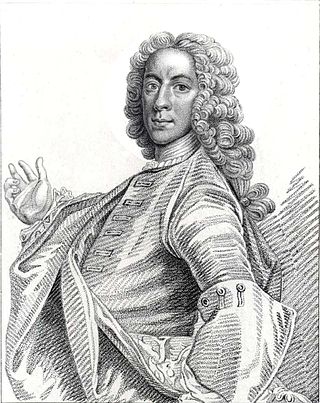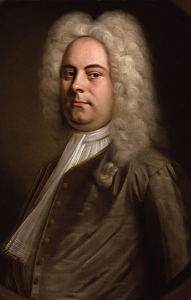Okay, so the title may be a little overdramatic and not strictly true, but it stems from a conversation I (unwittingly) overheard in practice the other day that peaked SarahKnowsEyes curiosity – I had to investigate further! Delving deeper, I discovered a fascinating and gruesome tale that I couldn’t wait to share with you all (aren’t I nice?!).

Johann Sebastian Bach
In 1749, at the age of 64, it is safe to assume that Bach’s vision had deteriorated naturally with age, he was undoubtedly presbyopic and hence required some form of magnification for reading, but it would seem that he had also developed cataracts, at a reasonably young age it has to said. (Of course, he could have been born with them, but I’m going slightly off at a tangent now…)
Although it would appear that cold hard facts are somewhat difficult to come by, we do know that Bach had either one or both of his eyes operated upon during the final days of March 1750 by a traveling British eye surgeon, or "oculist", the (self-appointed) Chevalier, John Taylor, and that at least one (possibly both) had to be operated on again a week later. This second operation left Bach totally blind. He was blind when he dictated his final work (The Art of Fugue), and he died a few months later on the 28th July 1750, from what was described as a “painful eye condition”.
More than two-and-a-half century's later, prominent Finnish ophthalmologist, Ahti Tarkkanen1, offered what he called a “plausible diagnosis” of the great composer: “Because Bach was blind after the second operation, and suffered from immense pain of the eyes and the body, the symptoms could be compatible with acute intractable secondary glaucoma.” It is also possible that the procedure may have caused retinal detachment(s). It is notable that Tarkkanen refers to Taylor as a “surgeon” in quotation marks, giving you some idea of his lack of respect for the practitioner.

Chevalier John Taylor
Daniel Albert2, the author of Men of Vision, a history of ophthalmology, calls Taylor “the poster child for 18th century quackery” noting that he “practiced in the most flamboyant way, drawing crowds to watch procedures in the town square, and then getting out of town before the patients took their bandages off." In fact, an entire chapter of his book is dedicated to Taylor's colourful, if somewhat gruesome, career. He describes him as "the most infamous of all ophthalmic quacks." His arrival into town would be heralded by placards and handbills, and his coach was decorated with paintings of eyeballs and the motto: "Qui dat videre dat viver" (He who gives sight, gives life).
This just makes me think of James Franco’s Wizard of Oz, in the 2013 film “Oz the Great and Powerful”:
.jpeg)
Taylor performed a “couching” on Bach, which is the oldest (dating from 2000 B.C.) and crudest form of cataract surgery. It involves dislocating the cataract lens with a sharp or blunt instrument,such as a needle, which is poked into the eye to effectively push the cataract-clouded lens back into the posterior chamber, out of the field of vision.
.jpeg)
/via www.bioline.org.br
At the time, physicians had no concept of bacteria, and no anaesthesia, so the idea was to operate as quickly as possible. "If you had a good result a third of the time, it was par for the course," Albert says of 18th century techniques: "People didn't expect a good outcome; they knew if they put themselves in the hands of an eye surgeon, they were taking a big chance." Of course, the risks may have been greater with a charlatan like Taylor…
Whilst there is no obvious cause-and-effect relationship between the operations and Bach’s death, Taylor’s postoperative care regime reads more like torture, by which the Orion Syndicate seem like pussy cats in comparison?! It included the use of eye drops of blood from slaughtered pigeons, pulverized with either sugar or baked salt, whilst in the case of serious inflammation Taylor prescribed large doses of mercury. In a 2005 paper examining the same subject, physician Richard Zegers3 notes that “the operations, bloodlettings, and/or purgatives would have weakened him and predisposed him to new infections.” Ultimately, a post-operative infection is the most likely the cause of Bach’s death.
Perhaps most tragically, a more modern method was being tested in a neighboring nation. In 1747 – three years before Bach’s operation – Paris-based ophthalmologist Jacques Daviel conducted the first cataract operation using a new, safer, more effective method. His “extracapsular technique” would soon become the standard procedure for cataract operations, and remain so until the early 20th century. Today, surgeries in which cataracts are removed and the lens replaced are among ophthalmology's most successful procedures.
Sadly, it was too late for Bach, and seemly so for another great composer of that era, George Frederick Handel. In 1751, he, too, underwent the surgery, several times, probably the last one at the hands of Taylor– and, like Bach, none of the surgeries worked and he was left blind. Poignantly, the lyrics to “Samson": "Total eclipse. No sun, no moon, all dark." – were written as Handel's eyesight failed.

George Frederick Handel
Wowsers! Let’s just say it makes me thankful that medicine has moved on somewhat since then! Or has it…
I was shocked to learn that this procedure is still in use in some parts of Africa and India! Tarkkanen points to a 2009 study from Sudan that examined the ultimate outcome of 60 contemporary couching patients. It found 60 percent of them were totally blind, due to glaucoma. Frightening!
Bibliography
-
Tarkkanen, A. (2012). Blindness of Johann Sebastian Bach. Arch Ophthalmol. Mar; 91(2): 191-192.
-
Zegers, R. H. C. (2005). The Eyes of Johann Sebastian Bach. Arch Ophthalmol. Oct; 123(10).
-
Albert, D. M. (1994). Men of Vision: Lives of Notable Figures in Ophthalmology. Saunders
And special thanks to:
Susan LambertSmith (http://www.med.wisc.edu/news-events/handel-bach-were-blinded-by-18th-century-quackery/25951) and Tom Jacobs (https://psmag.com/why-did-bach-go-blind-5957636c6b41#.gc62182b7) whose articles made for such an inspiring read, and made this blog post possible!

